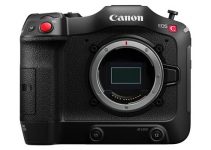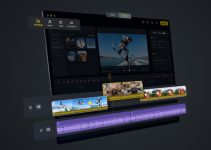The Panasonic GH5 is undoubtedly one of the most popular cameras in the indie filmmaking community these days. With its ability to shoot DCI-compliant 4K at 60fps alongside 10-bit internal recording, variable frame rates, 5-axis image stabilization and the fact that it has a relatively affordable price tag makes it an absolute no-brainer for many content creators. While the camera can already shoot in the glorious resolution of 4K, it seems that there’s actually a way to push its recording capabilities even further.
That’s exactly what videographer Joonas Tahtinen set out to do in the following video that shows off how with a little post-production magic and some in-camera adjustments, you can create 5K quicklapse videos running at 60 frames per second.
For those of you who may be wondering how is that even possible with a camera designed to shoot 4K video only, Tahtinen achieves recording in 5K through a technique called quicklapse, which suggest shooting stills in a burst mode and then putting them together in a sequence in post.
While the benefit of being able to produce 5K videos is indeed attractive, there are certain flaws associated with using this technique. First and foremost, it’s not recommended to shoot moving subjects due to the possible motion blur artifacts you may come across in your quicklapse video.
Secondly, you will only get a few seconds of footage due to the limitations of the GH5’s burst buffer. Thirdly, you won’t be able to record any sound since you’re merely taking photos. Lastly, working with 5K Raw images will be a serious struggle for your computer so don’t count on using this technique for projects with a quick turnaround.
That being said, you will need to adjust several camera settings to get started with the quicklapse in the first place. To begin, set your camera to the stills shooting mode and then switch to burst mode. Afterward, change the image quality to RAW and then set the burst rate to High (H).
You will also want to disable the lens and camera stabilization since it is not optimized for burst shooting. Lastly, to maintain sharpness, make sure you shoot with the sharpest lens you have at your disposal. After your settings are adjusted, go ahead and start filming by taking your burst photos until your camera buffer maxes out.
Once you’ve wrapped up shooting, it’s time to edit the image sequence to create the quicklapse effect. Make sure that before you begin manipulating your images, you’ve properly organized them to make the editing workflow easier.
In After Effects CC, go into the Import settings in the Preferences window and set the Sequence Footage to either 24 or 60 frames per second. Once done, right click on the project bin inside of After Effects and navigate to Import > File. Head over to the folder with your raw media and select the first file on top. Click on Options and then choose Camera Raw Sequence. After hitting OK, After Effects will automatically import the captured stills.
Next, you can adjust the look of your images in the Camera Raw window that opens up. Ensure that your white balance, tint, and exposure are set accordingly as well as don’t forget to select Remove Chromatic Aberration from the Lens Corrections menu to maintain image sharpness.
Before you continue, it would be wise to transcode your footage to a format such as ProRes so that when you playback your video, it would be much easier for your workstation to handle the newly created sequence.
Once you’ve transcoded your footage, bring that file back into After Effects and add it to a New Composition. Then drag and drop the Warp Stabilizer VFX plug-in to your footage and set the Smoothness to 5%. Once the plug-in stabilizes the file, create a pre-comp of your quicklapse clip.
If you’re planning to export your final composition in 60 frames per second, you’re going to have to make the program extend the video by a factor of five. To do this, go into the settings of your pre-comp. Look at the duration of your composition and multiply it by five, then adjust its length according to your calculation.
Next, right click on the composition and go to Time > Enable Time Remapping. Extend the clip to the new length you opted for. Finally, add the Timewarp effect to your composition. Set Vector Detail to 90 and then adjust the Global Smoothing and Local Smoothening accordingly. In Tahtinen’s case, both parameters are set to 50.
If all of those steps seemed somewhat complicated to you, you could download the script that Joonas Tahtinen made to automate the entire process. One more important note is that if you’re going to export the project in 5K, you will need to use a codec different than the standard H.264 since the latter doesn’t support 5K resolution.
Instead, use alternative codecs such as WebM, ProRes, CineForm or DNxHD. Also, keep in mind that the maximum shutter count of your GH5 is limited to around 200,000 stills, so use this technique with some extra caution and at your own risk.
[source: Joo.Works]
Order links:
Panasonic Lumix DC-GH5 Mirrorless Micro Four Thirds Digital Camera (B&H, Amazon US)
Disclaimer: As an Amazon Associate partner and participant in B&H and Adorama Affiliate programmes, we earn a small comission from each purchase made through the affiliate links listed above at no additional cost to you.




